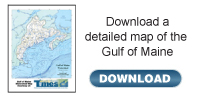Reality-based regulations
By Dave Kellam
 Planning board and conservation commission members in Kingston, New Hampshire, are “getting real” when it comes to protecting water quality. The municipal groups recently worked with the local planning commission and a consultant to rework the town’s wetland buffer ordinance to replace an approach that relied on zoning to determine buffer widths, and instead use a more realistic process that prescribes differing levels of protection based on a variety of actual wetland functions. Planning board and conservation commission members in Kingston, New Hampshire, are “getting real” when it comes to protecting water quality. The municipal groups recently worked with the local planning commission and a consultant to rework the town’s wetland buffer ordinance to replace an approach that relied on zoning to determine buffer widths, and instead use a more realistic process that prescribes differing levels of protection based on a variety of actual wetland functions.
Now, when a development proposal is presented to the town’s planning board, a functional analysis of the wetlands on or adjacent to the property is included. Conducted by a wetland scientist, the analysis is part of a typical wetland’s delineation report. The number of functions, such as groundwater recharge, that are conducted by the affected wetlands determines the buffer width required for that parcel.
Functions considered in the ordinance include floodflow alteration, groundwater recharge, nutrient removal, product export, sediment/toxicant retention, shoreline/sediment stabilizations, wildlife habitat, fish/shellfish habitat, endangered species habitat and vernal pools. This is a much more justified approach than the previous one that set buffer widths solely based on commercial, residential or rural zoning.
The ordinance also outlines a variety of activities that are restricted in wetland buffers, including construction of swimming pools, storage of motor vehicles (including motorized boats and snowmobiles), dumping of waste, use of landscaping chemicals (including pesticides, herbicides or non-organic fertilizers), and landscaping with non-native plants.
Kingston’s “one size does not fit all” approach is unique in the New Hampshire Seacoast because most municipal buffer ordinances opt for one standard buffer width, regardless of the quality of the wetland it protects. But it is important to take a close look at each situation.
“Simply put, all wetlands are not created equal,” said Glenn Greenwood, planner for the Rockingham Planning Commission. “Some wetlands are very critical to the protection of water quality or wildlife populations, while others don’t function that well. Those poorly functioning wetlands don’t need to have the same level of protection as highly functional ones.”
Kingston’s Planning Board Chairman Glenn Coppelman said he thinks this is the fairest way to balance natural resources protection and development needs. “This type of science-based ordinance gives developers options when looking at a parcel of land,” noted Coppelman. “They can build closer to wetlands that are of lesser importance, but must maintain larger buffers next to critical ones. It exemplifies the common sense zoning approach that Kingston is striving for. We simply want to make sure that natural resources that significantly benefit the greater community are not degraded by development.”
The warrant establishing the new buffer ordinance was approved by a town vote in March 2008 by roughly a 2 to 1 margin. Kingston residents clearly indicated that they support protecting their most valuable natural resources while enabling development in appropriate locations.
This project was funded by the Community Technical Assistance Program of the New Hampshire Estuaries Project, which provides assistance to communities on a wide range of regulatory and non-regulatory approaches to natural resources protection. [more information]
Dave Kellam is project coordinator for the New Hampshire Estuaries Project.
|








